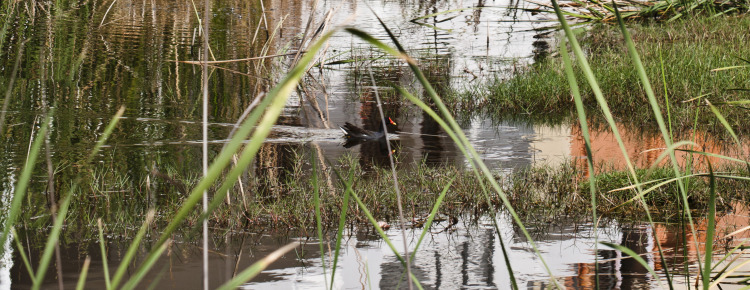20 years back Velachery was rich in life; I still remember growing as a child looking at Cobras, Rat Snakes, fishes and a lot of birds. There were hardly a few houses and the Pallikaranai marshland, which stretched to about 14,000 acres, was also part of it. During the laying of the metro railway tracks, a partition occurred; one side of it is now the protected Pallikaranai marshland, while the other side of the track is the cornered or adapted marshland fighting its last fight. Curious to see how the habitat survives here, I started observing them for a few years. It makes me really sad to see how we are destroying something so beautiful that is still fighting every day to co-exist with us.
How are they thriving? The remaining vacant land of hardly a few grounds is the home of the Purple Swamphen, Common Moorhen, White-throated Waterhen, Common Prinia, Ashy Prinia, Bushchat, Wagtail and more. This place is abundant with water life as well. They have adapted to our way of life and have started feeding and moving around when there is less movements along the road and along pathways. You could still hear them call out loudly during the morning hours and the late evenings. The Waterhens walk around compound walls and feed on the waste food washed out of kitchen drains in the early morning. While the Common Moorhen and Purple Swamphen are still a little bit shy, depending completely on the remaining tall grasses for cover and the water which almost never runs dries in this region, the Swamphens moves along the stretch where there is tall grasses cover and crosses roads and pathway to move around the small patches of grasslands. Some happy moments during this observation was to see the hatchlings of the Common Moorhen and Swamphen.
They do fight a good fight but what more can they do? They face constant threat from development, dogs, cats and schools kids. In the last one year almost half what of was left is now land filled and ready for construction. I don’t see any hope in the future for the residents of this marshland, unless all of the remaining land is bought and protected. Development is something which we can’t avoid but this destruction of the ecosystem could have been easily planned and prevented with simple planning:
- Leave few vacant lands in between which are thriving in life and find a way to interconnect them
- Make sure the water system which existed before is not affected by development
- Avoid domestic cats and dogs in this region
- Avoid constructing compound walls and use chain-linked fences
- Stop landfilling with concrete around houses
If we followed these steps am sure life would have been really beautiful for these birds and ecosystem in Velachery. Development can’t be avoided but definitely if we had studied the ecosystem before initiating development around the city location, we would have found a solution. We must not forget that life won’t be beautiful if all these beautiful creatures around us disappear. Please think!


